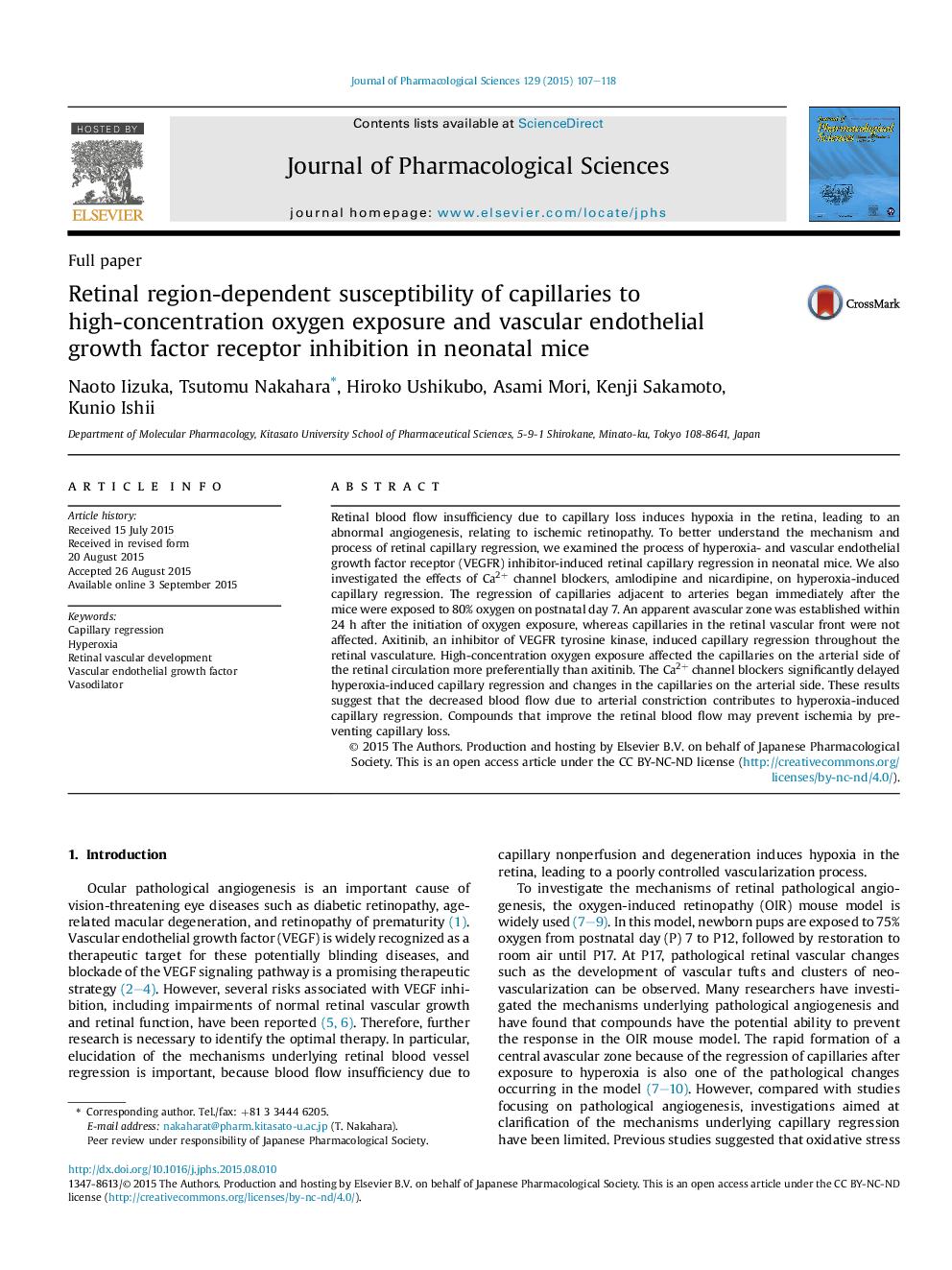| Article ID | Journal | Published Year | Pages | File Type |
|---|---|---|---|---|
| 2548836 | Journal of Pharmacological Sciences | 2015 | 12 Pages |
Retinal blood flow insufficiency due to capillary loss induces hypoxia in the retina, leading to an abnormal angiogenesis, relating to ischemic retinopathy. To better understand the mechanism and process of retinal capillary regression, we examined the process of hyperoxia- and vascular endothelial growth factor receptor (VEGFR) inhibitor-induced retinal capillary regression in neonatal mice. We also investigated the effects of Ca2+ channel blockers, amlodipine and nicardipine, on hyperoxia-induced capillary regression. The regression of capillaries adjacent to arteries began immediately after the mice were exposed to 80% oxygen on postnatal day 7. An apparent avascular zone was established within 24 h after the initiation of oxygen exposure, whereas capillaries in the retinal vascular front were not affected. Axitinib, an inhibitor of VEGFR tyrosine kinase, induced capillary regression throughout the retinal vasculature. High-concentration oxygen exposure affected the capillaries on the arterial side of the retinal circulation more preferentially than axitinib. The Ca2+ channel blockers significantly delayed hyperoxia-induced capillary regression and changes in the capillaries on the arterial side. These results suggest that the decreased blood flow due to arterial constriction contributes to hyperoxia-induced capillary regression. Compounds that improve the retinal blood flow may prevent ischemia by preventing capillary loss.
